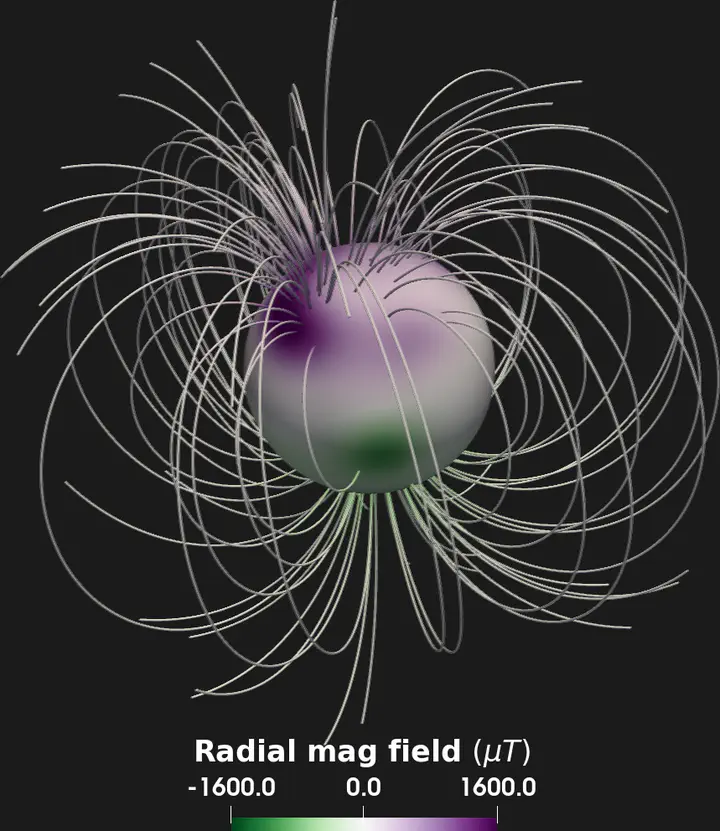Dynamo Simulations of Jupiter's Magnetic Field: The Role of Stable Stratification and a Dilute Core

Abstract
Understanding Jupiter’s present-day interior structure and dynamics is key to constraining planetary accretion models. In particular, the extent of stable stratification (i.e., non-convective regions) in the planet strongly influences long-term cooling processes, and may record primordial heavy element gradients from early in a planet’s formation. Because the Galileo entry probe measured a subsolar helium abundance, Jupiter interior models often invoke an outer stably stratified region due to helium rain. Additionally, Juno gravity data suggest a deeper, potentially stratified dilute core extending halfway through the planet. However, fits to Jupiter’s gravitational data are non-unique, and outstanding uncertainty over the equations of state for hydrogen and helium remain. Here, we use high-resolution numerical magnetohydrodynamic simulations of Jupiter’s magnetic field to place constraints on the extent of stable stratification within the planet. We find that compared to traditional interior models, an upper stably stratified layer between 0.9 and 0.95 Jupiter radii (RJ) helps to explain both Jupiter’s dipolar magnetic field and zonal winds. In contrast, an extended dilute core that is entirely stably stratified (no convective layers) yields significantly worse fits to both. However, our models with extended deep stratification still generate dipolar magnetic fields if an upper stratified region is also present. Overall, we find that a planet with a dilute core i.e., strongly stably stratified is increasingly challenging to reconcile with Jupiter’s magnetic field and winds. Thus if a dilute core is present, alternative modalities such as a fully convective dilute core, a complex multilayered interior structure, or double diffusive convection may be required.